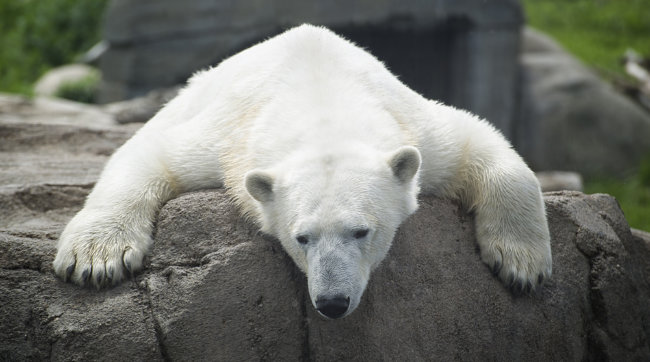
Before you ask, yes, there is a bone in the polar bear’s penis. It’s called the baculum. Nobody knows what it’s there for, whether it’s a vestigial bone or whether it serves some purpose elsewhere. What we do know is that thanks to pollution, polar bears are more likely to suffer the indignity of penis fracture.
Specifically, the human love of polychlorinated biphenyls, or PCBs, means that high concentrations of them have settled in the Arctic. According to New Scientist, those PCBs and other organohalogens not only result in smaller testicles and penis bones, those penis bones are more fragile. The researchers admit that the link isn’t strong enough statistically to prove the case, but it’s a likely culprit. And if it breaks, it doesn’t matter why, that’s one sad bear.
The plight of the polar bear is even worse than you might think. Changes in habitat and the resulting hunting difficulty has had an impact on polar bear populations, and broken penises will obviously drive down their numbers. It’s also driving them further south, resulting in nightmare fuel like the grolar bear.
The good news is that PCBs were banned worldwide in 2001, because they’re no better for humans than for bears. So they will eventually decline in the Arctic. Not that it’s going to matter to bears with a broken penis, but at least the odds of a broken penis will start declining soon. We hope. Is there a “Save The Bear Penis” charity?
